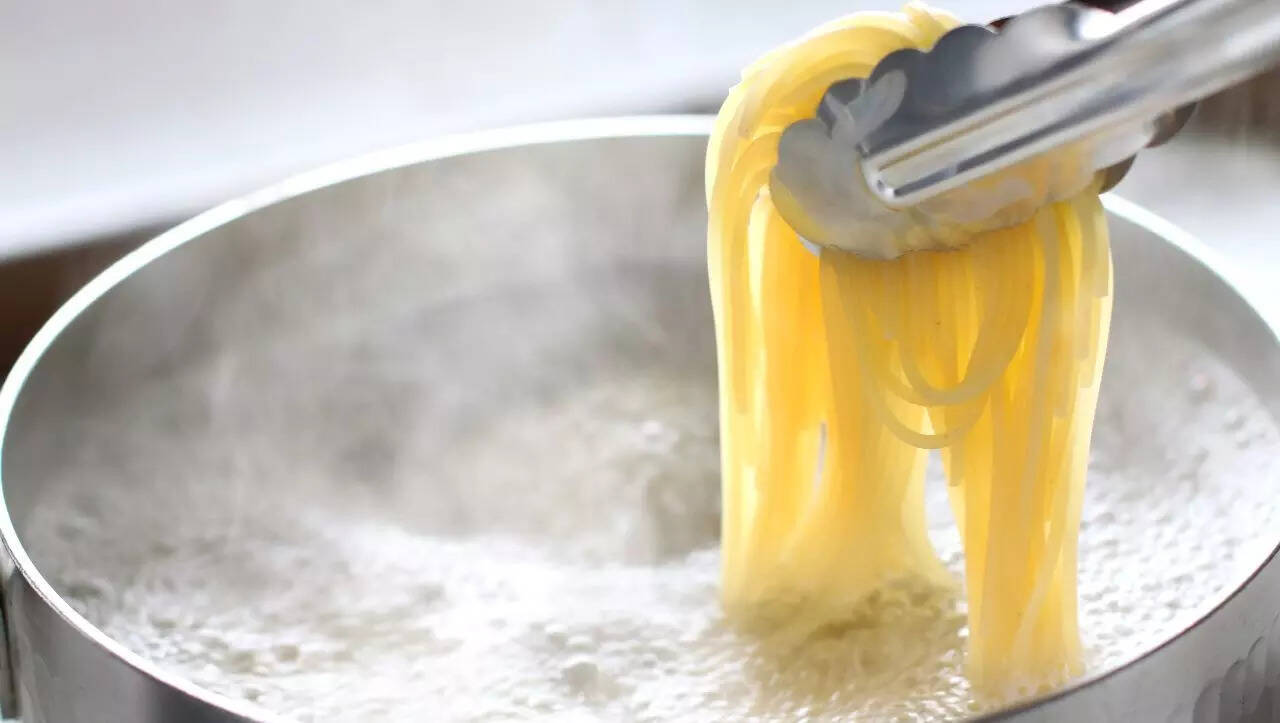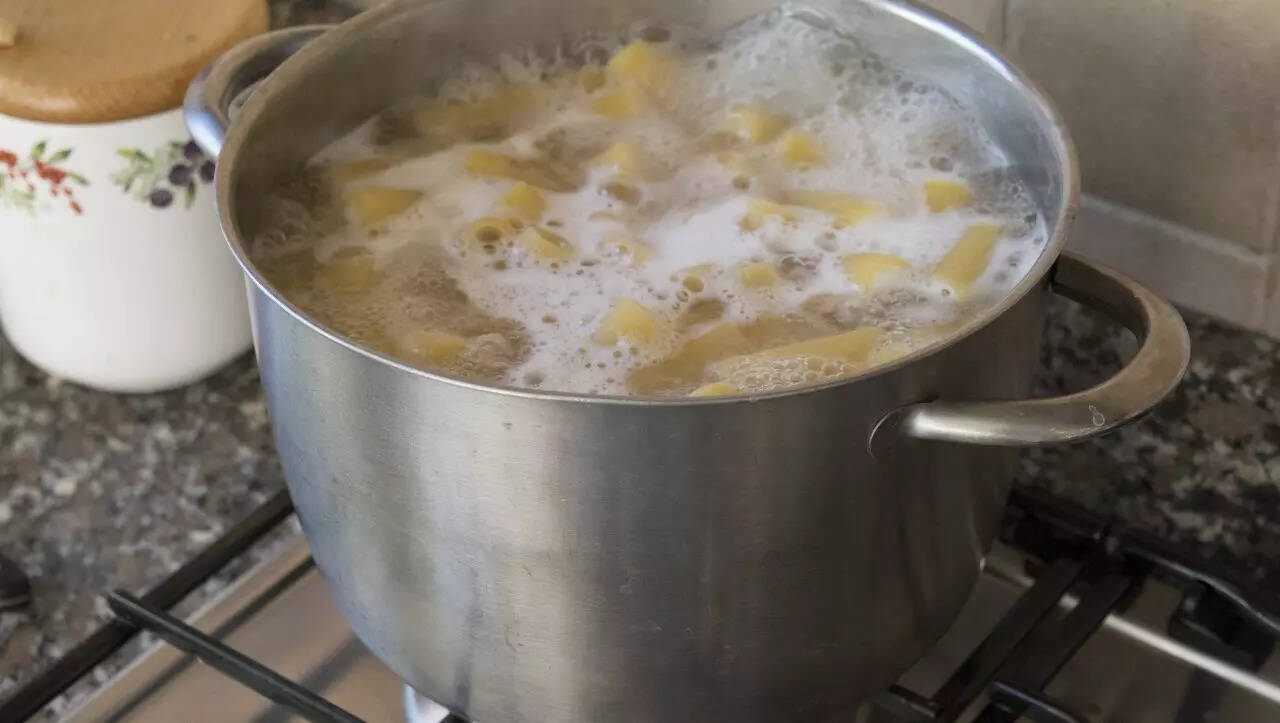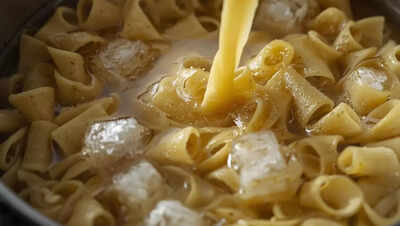
Adding ice to boiling pasta water sounds like something out of a cooking myth, but chefs and food scientists are starting to see the logic behind it. That simple handful of ice could be the difference between mushy noodles and perfectly textured pasta. Whether you are cooking spaghetti, penne, or tagliatelle, this small step might be worth a try for better taste and texture.A peer-reviewed study published in Foods (2024) highlighted how starch swelling, pasting, and gelatinisation directly influence the texture and quality of pasta. When temperature changes occur during cooking, these starch reactions can strengthen the pasta’s structure, giving it a springier bite and better flavour absorption. This could explain why adding ice at the right moment enhances both taste and texture.
The science behind adding ice to pasta water
When pasta is cooked in boiling water, starch granules swell and absorb moisture while gluten proteins stretch to form the structure that gives pasta its familiar chewiness. If the temperature remains too high for too long, the starches on the surface break down too quickly, leaving the pasta sticky and soft.Introducing ice briefly interrupts this process. The cold shock slows down the outer cooking while allowing the inner starch to hydrate evenly. As the water heats back up, the pasta develops a uniform consistency from edge to core. It is a small thermal pause that makes a noticeable difference on the plate.
How the ice in pasta water improves texture and flavour

When you drop ice into a pot of boiling pasta water, it melts instantly, slightly reducing the temperature for a short time. This mild dip in heat allows the starch to stabilise and strengthens the gluten structure. The result is pasta that feels lighter, less gummy, and easier to coat with sauce.Because the surface starch is not overly released, sauces cling better, enhancing flavour without making the dish heavy. That balance of smooth texture and rich taste is what gives pasta its satisfying mouthfeel. It is also why professional chefs focus so much on temperature control when cooking.
Why pasta texture affects the way you taste food
Texture is not just about feel; it changes how flavour is perceived. Food psychologists have shown that the firmness of pasta influences how much saltiness, sweetness, or richness we taste in a dish. A pasta that is too soft mutes flavour, while a springy one allows sauces and seasonings to shine through.By using the ice trick, you can keep pasta at the ideal point between soft and firm. The subtle control of heat and starch helps maintain that perfect al dente finish even after draining or reheating.
What chefs say about adding ice to pasta water

Professional chefs often use temperature changes to control food texture. They blanch vegetables and then cool them in ice baths to preserve colour and crunch. The same logic applies to pasta. The temporary cooling created by ice gives more control over starch expansion, which can lead to a smoother finish.Some Italian chefs use this technique for pasta salads or dishes served cold. It helps the pasta hold its shape when tossed with dressing or oil. Even when served warm, pasta cooked this way has a better bite and resists breaking apart.
How to try the ice technique in your kitchen
Bring a large pot of salted water to a rolling boil and add your pasta. When it reaches about two-thirds of the way through the cooking time, toss in a few ice cubes. Allow them to melt fully, then cook the pasta for another minute or two until done. Taste it and you should notice a firmer, cleaner texture.This method works especially well for cream-based sauces, where overly starchy pasta can make the dish gluey. The gradual cooling prevents clots and keeps the sauce silky and well-balanced.Cooking pasta is a delicate balance of heat, timing, and chemistry. The ice technique gives you an extra layer of control without changing ingredients or adding effort. It helps pasta cook evenly, hold its shape, and absorb flavour more effectively.Next time you prepare dinner, add a few cubes of ice to your pot and see the transformation yourself. A simple cooling step might just be the secret to pasta that tastes like it came straight from an Italian kitchen.Disclaimer: This article is for general informational purposes only and is not a substitute for professional medical advice, diagnosis, or treatment. Always seek the guidance of a qualified healthcare provider regarding any medical condition or lifestyle change.Also read| Health benefits of thekua: How this traditional Bihari sweet supports nutrition and wellbeing







